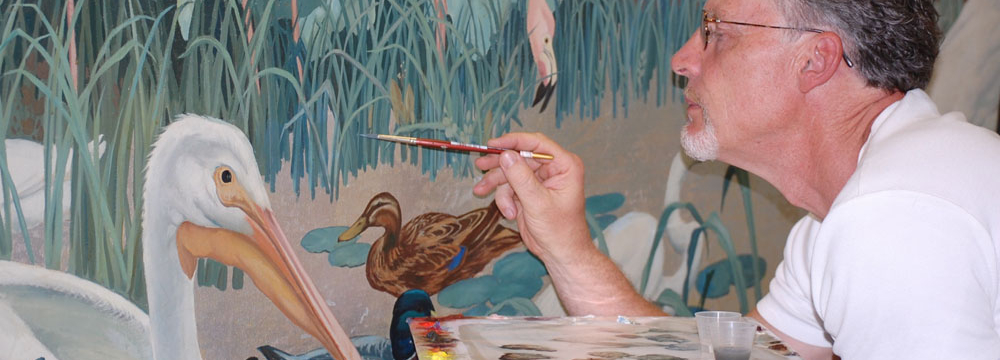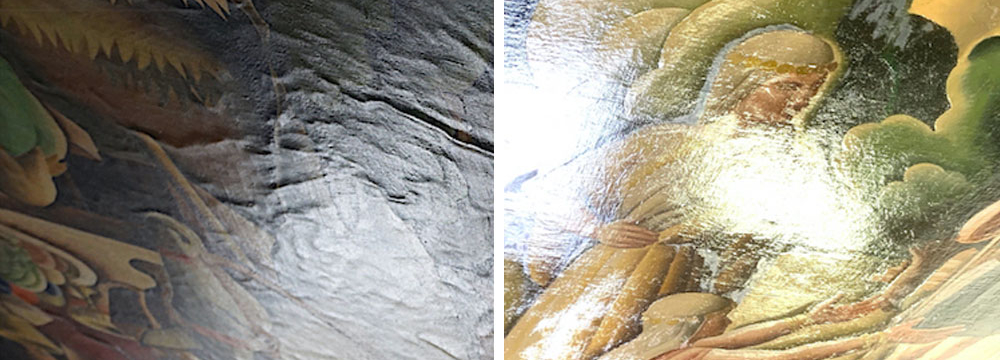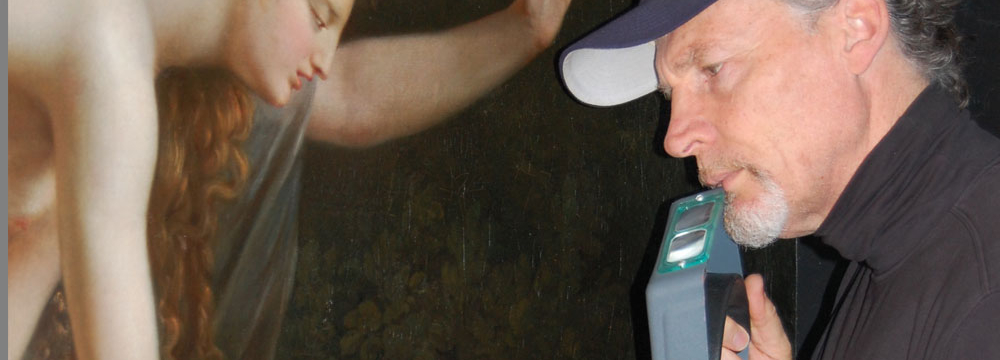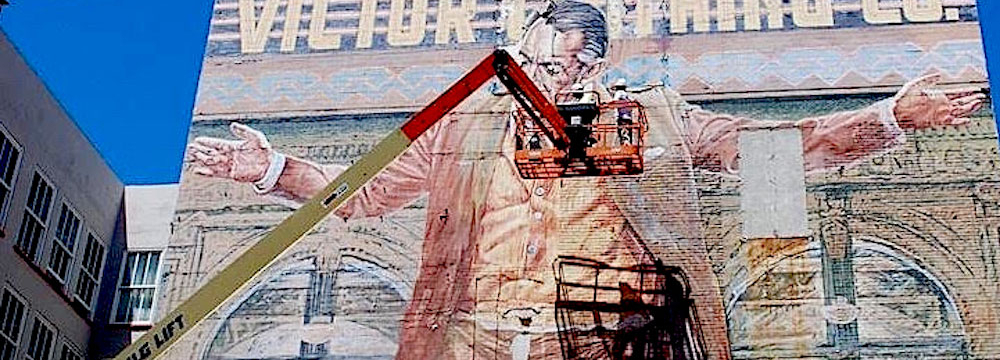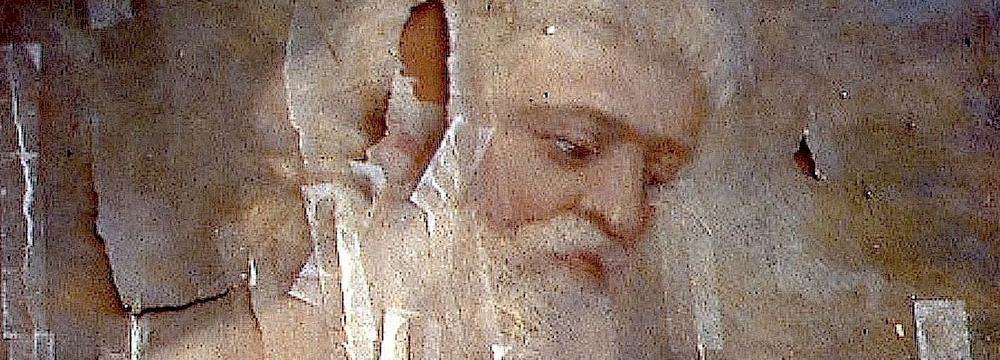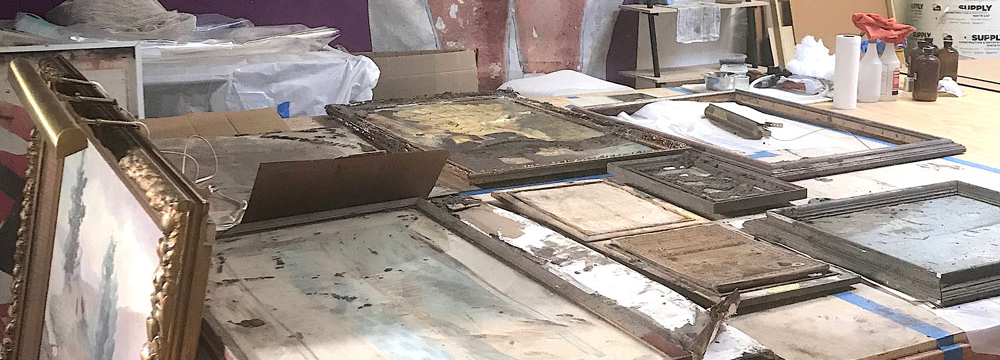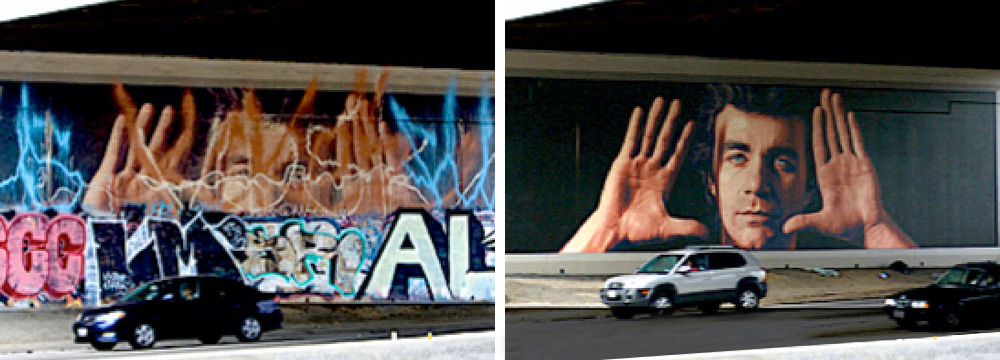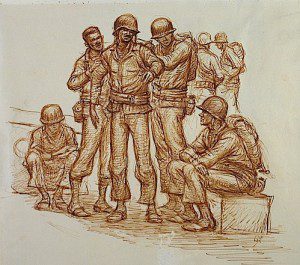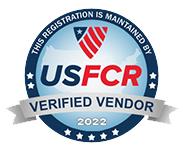How much does it cost to clean a painting? Because paintings are made with different techniques, many artists experimented, age makes a difference, previous restorations complicate issues… cleaning is not a per square inch type of estimating process. We routinely clean a 24″ x 30″ painting for $200.00 but we have charged as much as $10,000 for a very complicated project. We had the 40 Missions of California by Henry Chapman Ford (painted between 1874 – 1886) in our lab and every one was cleaned differently. A small test is needed to help determine the time required and the potential benefits from cleaning. We do not charge for these types of tests.
Can you authenticate a painting? We are well known for our “entry level” analytical tests that we perform. These tests include inspection with a stereo binocular microscope, pigment analysis with a polarizing microscope and XRF, use of ultraviolet visible fluorescence, use of an infrared reflectometer, use of x-radiography. We identify fake signatures often, identify improper restorations, and many other such problems. But we do not affirm the authorship of artwork. This type of work is done involving scholarship and research. Also, more sophisticated analysis is not done in our lab. We charge $200 per hour for in lab work PLUS additional fees for equipment usage. For more on this subject call our office 805 564 3438 and speak with Scott M. Haskins.
Do you work on paper items? We provide art conservation treatments on works of art on paper: watercolors, pastels, engravings. We do not work on books, hand colored maps, paper-mache’ sculpture etc.
Do you appraise art? It is unethical for a professional art conservation business to make statements of value of artwork because of the many ways there can be a conflict of interest. Stating the value of an item so that the favorable decision will be made to undertake the conservation costs is considered unethical. In fact it is common all over the world for dealers and art restorers to low-ball the value of an item brought in for restoration in order to buy it. Then they fix it up and resell it to the disadvantage of the previous owner: quite a racquet. We refer all people interested in appraisals to an independent certified appraiser with whom we collaborate to affirm condition and authenticity details and aid in the appraisal process and research.


